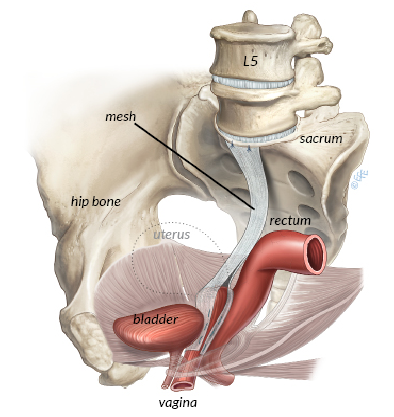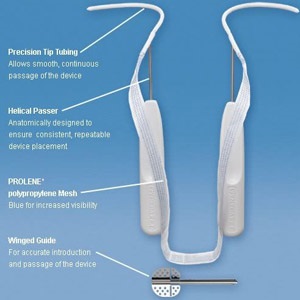
What to expect after pelvic floor reconstruction? What is the recovery time for prolapsed bladder surgery? After a large anterior vaginal wall repair some women may develop stress urinary incontinence due to the unkinking of the urethra (tube from the bladder). Your doctor will test the strength of your pelvic floor and sphincter muscles at the time of your physical examination. Pelvic floor strength tests.

This tests the strength of muscles and ligaments that support the vaginal walls, uterus, rectum, urethra and bladder. Magnetic resonance imaging (MRI). Considering pelvic prolapse repair ? See how it’s done in this animation. What happens during pelvic floor repair ? There are several types of pelvic floor repair. Your surgeon may perform several procedures during your operation.
You should have a detailed discussion with your consultant to determine which option is the best in your case. Anterior repair - repairs the weak muscles in the front wall of the vagina that. Laparoscopic colposuspension is a minimally invasive surgical technique that provides a safe and durable method for reconstruction of the pelvic floor and its contents without the need for a large abdominal incision.

Doing pelvic floor exercises will strengthen your pelvic floor muscles and may well relieve your symptoms. A GP or specialist may recommend a programme of supervised pelvic floor muscle training for at least weeks before you move on to other treatments or surgery. It can be shocking when this happens to you, but take heart: there are. The surgeon has the best understanding of how the procedure went and in what shape the woman’s pelvic tissues are. These structures become unable to support the pelvic organs.
Neurourology and Urodynamics. Colporrhaphy is a minimally invasive surgical procedure that repairs and restructures the weakened underlying pelvic floor tissue that caused pelvic organ prolapse. We perform colporrhaphy to correct two types of pelvic organ prolapse: cystocele (prolapsed bladder) and rectocele (prolapsed rectum). Your pelvic floor is the group of muscles and ligaments in your pelvic region.
Risks and complications of pelvic floor repair Risks and complications are rare with laparoscopic pelvic floor repair and generally depend upon the complexity of the individual case. The pelvic floor acts like a. Back pain and constipation are common in the first two to four weeks. It is an operation to support the body of the womb (uterus) by shortening the cervix (neck of womb) and conserving the body of the womb. A sacrospinous fixation is an operation designed to restore support to the uterus or vaginal vault (in a woman who has had a hysterectomy). Through a cut in the vagina, stitches are placed into a strong ligament (sacrospinous ligament) in the pelvis and then to the cervix or vaginal vault.
The length of the procedure will vary, depending on whether the procedure is performed alone or in conjunction with another procedure. The graft material will be placed vaginally or abdominally to correct the pelvic floor defect and to restore your pelvic floor to its natural state. Cleveland Clinic 43views.
If you’ve been diagnosed with pelvic organ prolapse, your doctor may recommend a wait-and-see approach, lifestyle changes, exercises to strengthen the pelvic floor muscles, or a removable vaginal device that supports pelvic organs called a pessary. If none of these options provide adequate symptom relief, your doctor may recommend surgery. They can also cause pelvic organs to bulge into the vaginal canal.
While surgery is not usually the first course of treatment, it may be needed for women who have persistent symptoms. Prolapse Surgery Success Rate Do you ever say the wrong thing but have the right intentions? This happened to me recently, when someone wrote in asking about my pelvic floor program for strengthening after a prolapse repair. I love helping women resolve or decrease prolapse naturally, but sometimes surgery is needed.
Normally, the bladder is kept in its proper place by muscles, ligaments, and other tissues. Sometimes, however, these structures weaken and the bladder falls out of place.
No comments:
Post a Comment
Note: Only a member of this blog may post a comment.